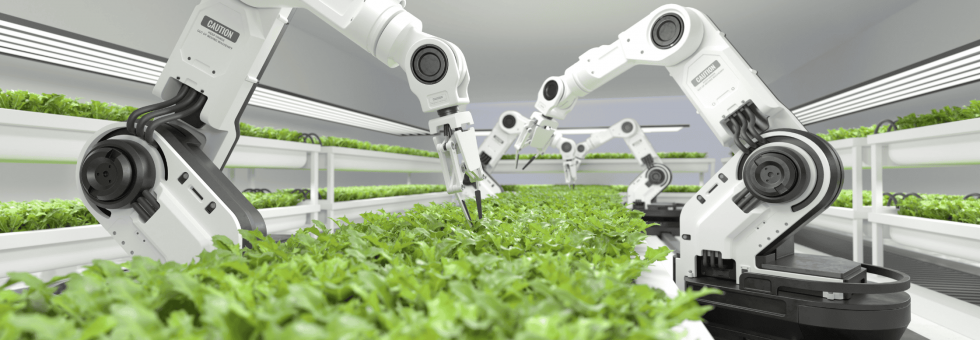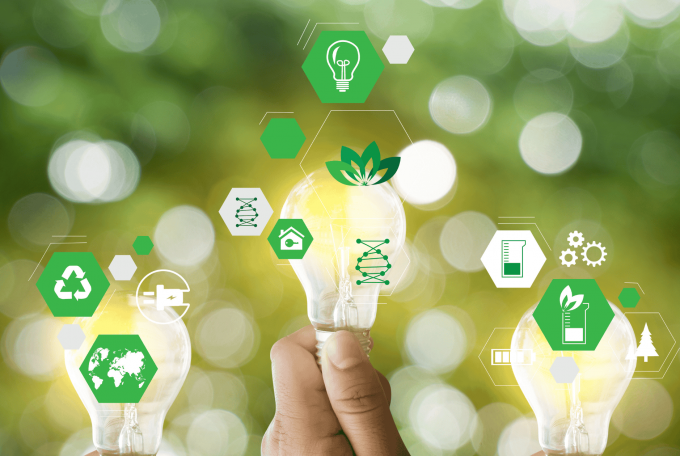Agriculture has always been the backbone of human civilization, but as the global population grows and environmental challenges intensify, the need for smarter, more efficient farming practices has never been greater. Enter Artificial Intelligence (AI)—a game-changing technology that is revolutionizing the way we grow, monitor, and protect our crops. From optimizing water and fertilizer usage to predicting crop yields and reducing food waste, AI is paving the way for a more sustainable and productive agricultural future. In this blog, we’ll explore how AI is being applied in precision farming, crop monitoring, pest control, and more, with real-world examples and a fun fact that highlights its potential to reduce food waste.
AI in Precision Farming: Optimizing Water and Fertilizer Usage
One of the most significant challenges in modern agriculture is the efficient use of resources like water and fertilizers. Overuse can lead to environmental degradation, while underuse can result in poor crop yields. AI is stepping in to strike the perfect balance.
Through machine learning algorithms and IoT (Internet of Things) sensors, AI systems can analyze soil conditions, weather patterns, and crop needs in real-time. These systems provide farmers with precise recommendations on how much water and fertilizer to use, ensuring optimal growth while minimizing waste. For example, AI-powered irrigation systems can adjust water flow based on soil moisture levels, reducing water consumption by up to 30%. Similarly, AI-driven fertilizer applications ensure that nutrients are delivered exactly where and when they are needed, preventing runoff and pollution.
AI in Crop Monitoring: Drones and Satellite Imagery
Gone are the days when farmers had to rely solely on manual inspections to monitor their fields. Today, AI-powered drones and satellite imagery are transforming crop monitoring into a high-tech, data-driven process.
Drones equipped with cameras and sensors can fly over vast fields, capturing detailed images and data on crop health, growth patterns, and potential issues like nutrient deficiencies or disease outbreaks. Satellite imagery, combined with AI algorithms, can provide even broader insights, tracking changes in vegetation over time and predicting potential yield outcomes.
These technologies enable farmers to identify problems early and take corrective action before they escalate. For instance, if a section of a field shows signs of stress, AI can pinpoint the exact location and recommend targeted interventions, saving time and resources.
AI in Pest Control: Identifying and Targeting Pests
Pests are a constant threat to agricultural productivity, but AI is helping farmers fight back with precision and efficiency. Traditional pest control methods often involve blanket applications of pesticides, which can harm beneficial insects and the environment. AI, however, offers a more targeted approach.
Using image recognition and machine learning, AI systems can identify specific pests and their locations within a field. For example, cameras mounted on drones or tractors can capture images of crops, and AI algorithms can analyze these images to detect signs of pest infestations. Once identified, farmers can apply pesticides only where needed, reducing chemical usage and minimizing environmental impact.
In some cases, AI can even predict pest outbreaks before they occur by analyzing historical data, weather conditions, and crop health. This proactive approach allows farmers to take preventive measures, protecting their crops and reducing losses.
Real-World Examples of AI in Agriculture
AI is not just a theoretical concept—it’s already making waves in the agricultural industry. Here are a few real-world examples:
1. John Deere’s AI-Powered Tractors
John Deere, a leader in agricultural machinery, has integrated AI into its tractors and equipment. These AI-powered machines use computer vision and machine learning to analyze soil conditions, optimize planting patterns, and even autonomously navigate fields. By leveraging AI, John Deere is helping farmers increase efficiency and reduce labor costs.
2. AI-Driven Crop Yield Prediction
Predicting crop yields is crucial for planning and resource allocation. AI systems can analyze vast amounts of data, including weather patterns, soil conditions, and historical yield data, to provide accurate predictions. Companies like Descartes Labs are using AI to forecast crop yields at both regional and global scales, helping farmers and policymakers make informed decisions.
Fun Fact: AI Can Help Reduce Food Waste!
Did you know that AI can play a significant role in reducing food waste? By predicting crop spoilage and optimizing supply chains, AI helps ensure that more food makes it from the farm to the table. For example, AI algorithms can analyze factors like temperature, humidity, and transportation times to predict when and where spoilage is likely to occur. This information allows farmers and distributors to take action, such as adjusting storage conditions or rerouting shipments, to prevent waste.
The Future of AI in Agriculture
As AI continues to evolve, its applications in agriculture will only expand. From autonomous farming equipment to AI-driven decision-making tools, the possibilities are endless. By embracing these technologies, farmers can increase productivity, reduce environmental impact, and contribute to a more sustainable food system.
The integration of AI into agriculture is not just a technological advancement—it’s a necessity. With the global population expected to reach nearly 10 billion by 2050, the pressure on our food systems will only increase. AI offers a way to meet this demand while preserving our planet’s resources.
Conclusion
AI is no longer a futuristic concept; it’s here, and it’s transforming agriculture in ways we could only imagine a few decades ago. From precision farming and crop monitoring to pest control and yield prediction, AI is helping farmers work smarter, not harder. Real-world examples like John Deere’s AI-powered tractors and AI-driven crop yield predictions demonstrate the tangible benefits of this technology. And with fun facts like AI’s ability to reduce food waste, it’s clear that the potential of AI in agriculture is vast.
As we look to the future, one thing is certain: AI will continue to play a pivotal role in shaping the future of farming, ensuring that we can feed the world sustainably and efficiently. So, the next time you enjoy a meal, take a moment to appreciate the incredible technology that helped bring it to your plate!
Are you eager to dive into the world of Artificial Intelligence? Start your journey by experimenting with popular AI tools available on www.labasservice.com labs. Whether you’re a beginner looking to learn or an organization seeking to harness the power of AI, our platform provides the resources you need to explore and innovate. If you’re interested in tailored AI solutions for your business, our team is here to help. Reach out to us at [email protected], and let’s collaborate to transform your ideas into impactful AI-driven solutions.





